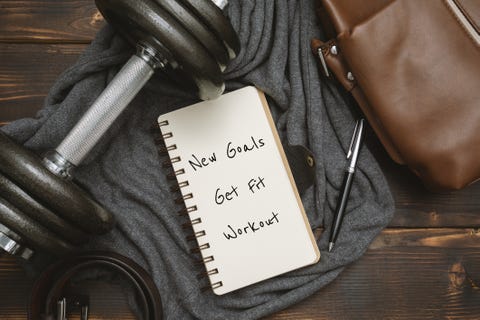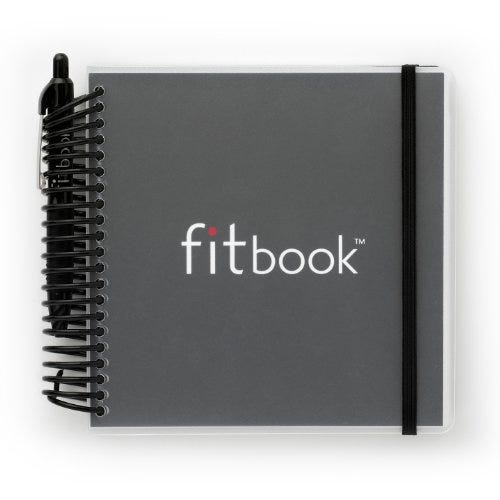You likely keep a log of a lot of stuff in life: meetings, macros, maybe even those small tasks you handle to get through the day. But the little details your fitness routine (how much progress you’re making on that lift, how you felt after that so-sore-I-can’t walk workout)? Maybe not. That would be a mistake, according to experts.
“Nutrition logs get all the press as they have been shown to help you make positive changes [to your diet] that allow you to see results,” says Joe Gambino, C.S.C.S., D.P.T., a New York-based physical therapist and trainer. “But not many people carry this same phenomenon over to their workouts.”
Trainers say you should, since the results can be surprisingly positive. “Maintaining a fitness journal can be one of the most impactful things you can do for your own training,” says Matthew N. Berenc, C.S.C.S., director of education at the Equinox Fitness Institute in Los Angeles, CA.
Keeping a log can make you a more efficient athlete. Say you flew through an eight-week workout, gained strength, lost weight, or shaved serious time off your mile—that’s probably success you’d want to replicate. “There is a chance that returning back to this program in the future can yield similar benefits,” says Gambino.
Writing down your fitness past, present, and future puts you in a position to repeat successes, build on them, and find out what hasn’t worked—then avoid those paths to failure. It also helps you plan and maintain your focus, which can help to make your workouts more intentional, says Gambino.
But the best fitness journals include more than just sets and reps. Here’s what to write down, how to do it, and why some dedicated penmanship could lead to unexpected, unprecedented gains, no matter what your goals are.
How to Keep a Fitness Journal

Getty ImagesConstantine Johnny
Don’t Leave Anything Out
“Your workout plan should, first and foremost, have every single exercise written down,” says Gambino. Don’t forget reps, sets, tempos, rest breaks, and weights or equipment settings. “You know your log is detailed enough when you can recreate the workout a year down the line without missing or forgetting something.”
If you use a wearable fitness tracker, pulling in some of the biometric info it collects (average, peak, and recovery heart rate, for example) provides even more context around the work you’re doing.
Include a baseline for yourself in your journal, too, bodyweight, mile PR, body fat percentage, or maybe personal records on the exercises you care most about. On top of looking back on your workouts (and building off of them) it’ll help you easily track progress over time, remind you of any goals you have, and motivate you to work toward them, notes Gambino.
Get in Touch With How You Feel
Tracking how you feel and perform session-to-session highlights opportunities to jump ahead and push your pace, as well as times when you might benefit from a little added recovery instead, notes Berenc.
Some of this info can be logged as as a rating of perceived exertion (RPE). “Your RPE is a way of saying how hard you felt the training was that day on a scale of 1 to 10, with 10 being the absolute hardest,” says Berenc. Using the measure allows you to see if the same exercise or session is getting easier or harder, and if you should progress or take a break. 200-pound deadlift a 9 out of 10 a few weeks ago but now it’s a 6 or 7? Could be a good cue to add some extra plates to the bar.
Be sure to also note specifics such as any pain, increased tightness, or what you did the day leading up to training (A few too many beers? A great night’s sleep?) for a bigger-picture view of your performance.
This careful record keeping has injury prevention benefits, too. “If you record how you feel with each lift—not only ‘was it hard?’ but how your body felt after—you can identify the lifts that may not be right for you,” says Berenc. Pronated (overhand grip) pullups kill your shoulders? Try a neutral grip next time.

Getty Imagescipella
Jot Down the Good
We’ve all wracked our brains for that workout that kicked our ass in a good way or that exercise we wish we remembered exactly how to do. Write that stuff down.
“Exercise can spark creativity,” says Berenc. And the more you enjoy something, the more likely you are to not only to come back to it, but to build off it too.
The gym is also a great place to contemplation and brainstorming if you work out alone. Write down your best unrelated-to-fitness thoughts, too; maybe you finally thought of the perfect gift for your partner right after you racked your dumbbells. If you get your best thoughts in during a workout, letting ‘em go to waste is, well, a waste.
Find a ‘Journal’ That Works for You
The pen and paper versus app debate ultimately boils down to which you’ll commit to using consistently.
“For some, writing down what you did is easier and allows for quicker note-taking,” says Berenc. You’ve also got a ton more flexibility this way and if you’re a no-phone-while-I-sweat kind of guy, it’s a good tech-free choice.
If that’s your style, check out Fitbook, a physical journal with 12-week goal setting periods and other workout-centric formatting options. Or, you can pick up any other notebook and make it your log.

On the other hand, apps provide built-in structure—and many turn training-specific stats into graphs you can use to track progress.
Going digital? Gambino suggests that you consider the exercise.com app, since he claims most of the exercises you’d do anyway are programmed into the system. It allows you to log the basics, has an area for notes, and lets you rate workouts from 0 to 10.
Berenc favors Way of Life, an app that tracks your commitment to certain goals, allows you to take notes, and has an option to export data to an Excel file. But you don’t necessarily need a separate app to stay on top of your routine. Both the ‘Notes’ and ‘Voice Memo’-style programs work just as well, he says.
Source: Read Full Article
